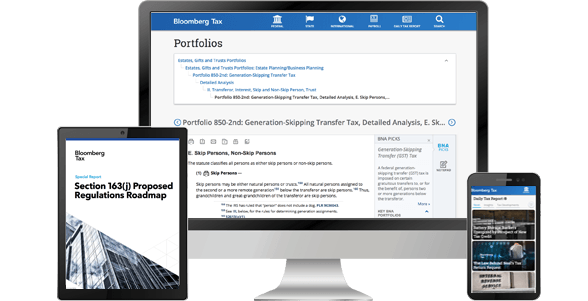Ensure complete payroll compliance
Get to the right answers to your questions more efficiently, with expert analysis, practical guidance, and tools – all on one easy-to-use platform.
Payroll resources
Guidance in every area of payroll administration
Comprehensive coverage
Compare and comply with regulations at every level, with resources that keep you in line, wherever you do business.
- Federal
- State
- International
Answers and research
Get concise answers to your most pressing payroll questions or send in a research question for expert guidance anytime you need it.
- Fast Answers™
- Custom research requests
- Payroll administration guide
Timesaving tools
Access a comprehensive set of tools designed specifically for payroll professionals – all to make the most of your staff and time.
- State chart builders
- Chart builder
- Interactive payroll forms
The value of
Bloomberg Tax Research
- Everything you need is built into one comprehensive platform – from the latest payroll developments and trends to up-to-date guidance in every area of payroll administration and compliance
- Reliable explanations for hundreds of payroll questions are at your fingertips
- With tools specifically tailored for payroll, we save you time and effort with resources that meet your specific needs
Hot topics
Stay alerted to the latest payroll compliance changes and effectively manage risk.
For full access to Bloomberg Tax Research, request pricing here.
CHECKLIST
2023 Payroll Year End Checklist
The checklist improves payroll’s ability to complete the year-end process – breaking down essential tasks by month, starting with the first planning session in October to the year-end briefing held in March.
REPORT
2023 Payroll Year End Report
Close out 2023 and establish a strong start to 2024 payroll processes with this report from KPMG LLP and Bloomberg Tax which delves into vital considerations for a success year-end.
ON-DEMAND WEBINAR
Preparing for Payroll Year End
During this webinar, tax professionals from KPMG LLP and Bloomberg Tax discuss key aspects of the 2023 year-end process.
Hear from our customers
I use Bloomberg Tax Research every day to examine regulations, requirements, and guidance for payroll-related matters. It is easy to use and saves time by consolidating all the information needed into one place. It is an essential tool for payroll!
Bloomberg Tax Research is one of the finest payroll tools that I have worked with. Well-researched articles are presented in an organized manner. The state chart builder is my personal favorite!
Customer resources
Access to this information requires a subscription to Bloomberg Tax Research. Don’t have access? Request a demo.
Payroll by the numbers for 2023
Minimum wage, unemployment insurance taxation, and supplemental wage withholding rates are undeniably some of the most important facts and figures for payroll. These maps break down how these aspects vary across states.
Real-time payroll news
Our news team brings you top stories on developments, along with breaking federal and state news items certain to make an impact. We also provide highlights of payroll news from around the world.
The perfect price
Explore pricing options, get all your questions answered, request a demo, and more.

